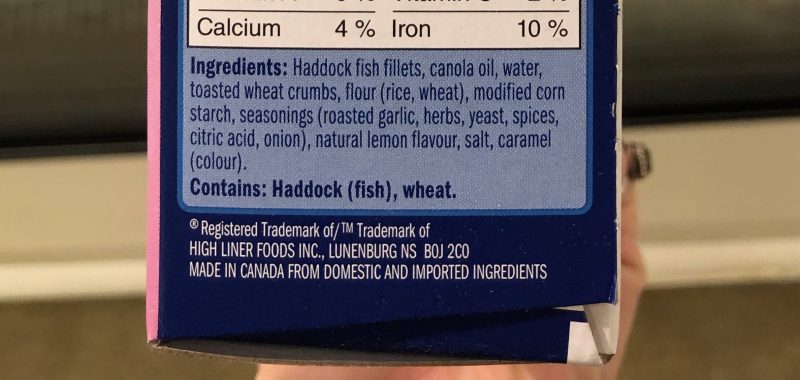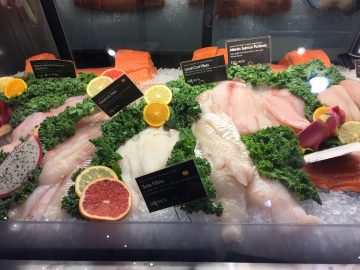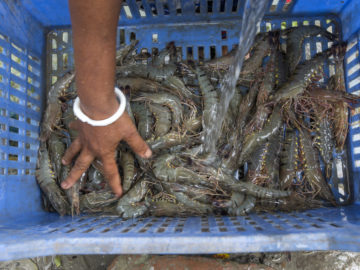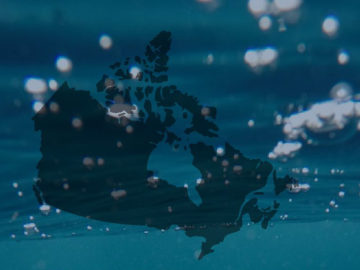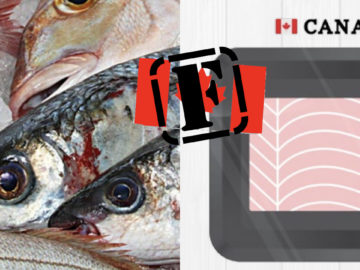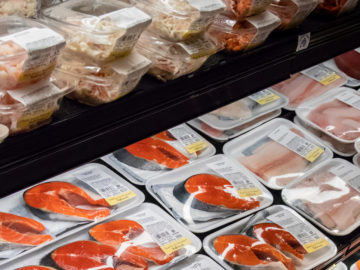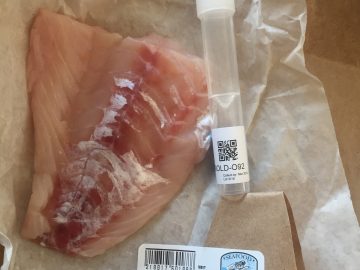Have your say on proposed “Made in Canada” labelling guidelines.
Do you care about the transparency of food labels and where your seafood comes from? Have your say on CFIA’s proposed changes to the “Made in Canada” and “Product of Canada” food labelling claims. The consultation is open until June 23rd.
Made in Canada
The CFIA is proposing to remove necessary information to the “Made in Canada” claim guidance. Many of you have concerns regarding the health and safety, environmental sustainability and social responsibility of the seafood products you purchase – and the origin of seafood is a contributing factor to these risks. The proposed changes reduce the transparency of seafood products and eliminate information you need to understand where your food comes from. This impedes your ability to make informed purchasing decisions.
Right now, products “Made in Canada” have to state if any ingredients were imported. For example, the seafood brand High Liner Foods has the qualifying statement “made from domestic and imported ingredients” on their “Made in Canada” frozen fish products when their product was processed and packaged in Canada, but some or all of the fish was caught or farmed in another country. The CFIA proposal is to get rid of the qualifying statement, so that products can be labelled as “Made in Canada” with no comment as to whether the ingredients were imported.
The CFIA proposal is to get rid of the qualifying statement, so that products can be labelled as “Made in Canada” with no comment as to whether the ingredients were imported.
SeaChoice has let CFIA know we do not agree with their proposal. If you agree with our concerns, we encourage you to do the same. You can submit your concerns here. Below is some text we have prepared to support the rationale for your submission, which we invite you to use as is or edit as you see fit.
Suggested content for rationale box:
I do not support the proposed guidelines for “Made in Canada” claims. The proposal to remove the qualifying statement accompanying the “Made in Canada” claim creates the opportunity for a food label to be misrepresentative and misleading. As a seafood consumer, I look for information such as the origin of a product’s content to understand where my food comes from. I do this because the origin is a risk factor to the health and safety, environmental sustainability and social responsibility of the seafood product and/or because I want to support Canada’s seafood industry. The qualifying statement at least tells me if the ingredients are fished, harvested or grown in Canada or internationally. This basic information is crucial in the absence of more detailed seafood labelling, as is often the case under Canada’s current seafood labelling laws.
Product of Canada
We are also concerned with the proposed change to the “Product of” claim, and have let CFIA know we do not support it.
Under the current definition of “Product of Canada,” all or virtually all major ingredients, processing, and labour used to make the food product are Canadian. “All or virtually all” has been interpreted to mean greater than 98% – but CFIA is proposing to reduce this threshold to 85%. Under the 85% guidelines, seafood caught in Canada and processed overseas would not meet the “Product of” threshold. Ironically, imported raw seafood that receives further processing in Canada could be a “Product of Canada” if most of the other ingredients, processing and labour were Canadian. We think this is opposite to what Canadians are looking for in their seafood labelling, for the reasons identified in our “Made in Canada” rationale above, and consider the proposed guidance to be misleading and not truthful. If you agree with our concerns, we encourage you to tell CFIA here.
